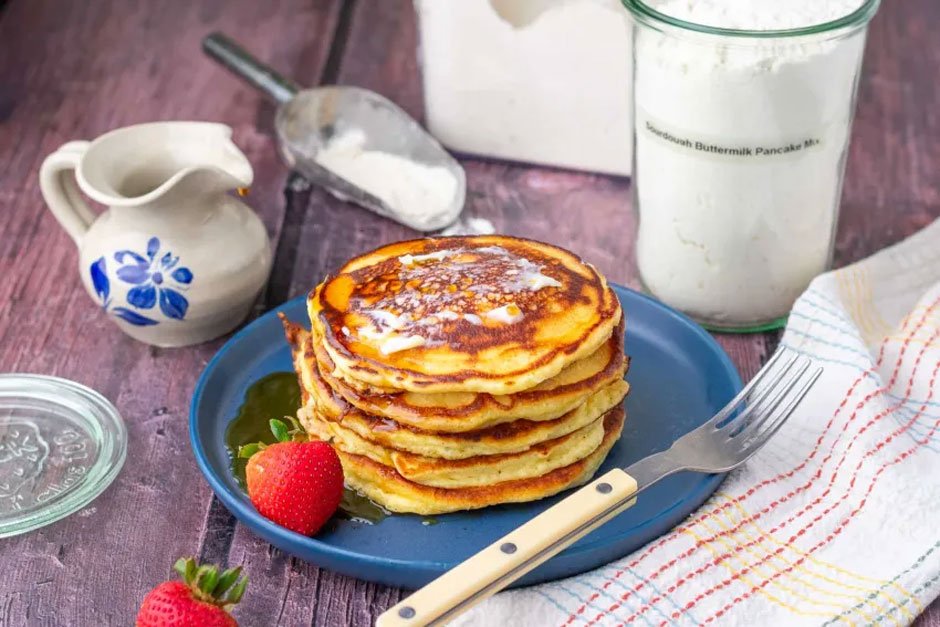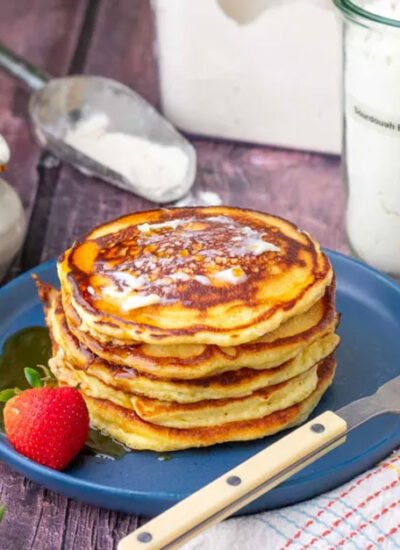 Pancakes have long been a beloved breakfast staple, providing a warm and comforting start to the day. However, not all pancake mixes are created equal. Among the variety of options available, buttermilk pancake mix has carved out a distinct place on many kitchen shelves. Its popularity is not just due to tradition or taste preferences but also the unique characteristics that differentiate it from a standard pancake mix. We will explore what sets buttermilk pancake mix apart from regular pancake mix, delving into ingredients, texture, flavor, and the science behind why buttermilk creates a different pancake experience altogether.
Pancakes have long been a beloved breakfast staple, providing a warm and comforting start to the day. However, not all pancake mixes are created equal. Among the variety of options available, buttermilk pancake mix has carved out a distinct place on many kitchen shelves. Its popularity is not just due to tradition or taste preferences but also the unique characteristics that differentiate it from a standard pancake mix. We will explore what sets buttermilk pancake mix apart from regular pancake mix, delving into ingredients, texture, flavor, and the science behind why buttermilk creates a different pancake experience altogether.
The Key Differences Between Buttermilk Pancake Mix and Regular Pancake Mix
1.Ingredients and Their Role in Flavor and Texture
The fundamental difference between buttermilk pancake mix and regular pancake mix lies in the ingredients, particularly the presence of buttermilk powder or real buttermilk in the mix. Regular pancake mix typically contains flour, sugar, baking powder, salt, and sometimes powdered milk or milk solids. It aims to provide a neutral base that works well with a variety of add-ins and toppings but doesn’t have a standout tang or richness. When searching for the best pancake mix, many people find that those containing buttermilk powder deliver a more flavorful and satisfying result.
In contrast, buttermilk pancake mix includes buttermilk powder, which brings a mild acidity and a creamy depth to the batter. This slight acidity reacts with baking soda or baking powder during cooking, producing carbon dioxide bubbles that make the pancakes lighter and fluffier. The buttermilk’s acidity also tenderizes the gluten in the flour, resulting in a softer texture. The difference in ingredients not only influences the flavor but also the texture, making buttermilk pancakes distinctively tender and moist compared to their regular counterparts.
2.Flavor Profile: Tanginess and Richness
One of the most noticeable differences when tasting pancakes made from buttermilk mix versus regular mix is the flavor. Buttermilk introduces a subtle tang that elevates the flavor beyond just sweetness. This tanginess is natural and comes from the lactic acid in buttermilk, which complements the sweetness in the batter and enhances the overall taste experience. Regular pancake mixes, on the other hand, tend to be more neutral or just mildly sweet, allowing toppings like syrup or fruit to take center stage. The richness from the buttermilk also adds a creamy mouthfeel that regular pancake mix usually lacks. This gives buttermilk pancakes a more complex and satisfying taste that many people seek when making breakfast at home. The tang and richness help balance the flavor, preventing the pancakes from feeling too plain or one-dimensional.
3.Reaction During Cooking and Resulting Texture
The acidity in buttermilk pancake mix triggers a chemical reaction with the leavening agents in the mix, which is crucial in developing the pancake’s texture. When mixed and heated, the acid in buttermilk interacts with baking soda or baking powder to release carbon dioxide gas. These gas bubbles get trapped in the batter, causing the pancakes to rise and develop a light, fluffy texture with a slightly crisp exterior. This reaction is less pronounced in regular pancake mixes because they often lack that level of acidity. As a result, pancakes made from a regular mix can be denser or less tender. Buttermilk pancakes typically have a delicate crumb and a tender bite that makes them feel more indulgent. This interaction between acidity and leavening is the scientific reason behind the delightful lift and softness that buttermilk pancakes offer.
4.Moisture Retention and Shelf Life
Buttermilk pancake mix often retains moisture better during cooking than regular pancake mix, contributing to a more satisfying eating experience. The fats and proteins in buttermilk help hold moisture within the pancake, preventing it from drying out quickly. This makes buttermilk pancakes ideal for those who prefer a soft, moist texture even after sitting for a few minutes. Regular pancake mixes might result in pancakes that firm up or become crumbly more quickly, especially if overcooked or left to sit. Additionally, buttermilk powder in the mix has a natural preservative effect due to its acidity, which can enhance the shelf life of the dry mix compared to some regular pancake mixes. The moisture retention and freshness maintained by buttermilk ingredients ensure that pancakes remain enjoyable even when not eaten immediately.
5.Nutritional Differences
While both mixes are primarily composed of flour and leavening agents, the addition of buttermilk powder in buttermilk pancake mix slightly changes the nutritional profile. Buttermilk contains proteins, vitamins such as B12 and riboflavin, and minerals like calcium, which add modest nutritional value. Although the amount of buttermilk powder in the mix is typically small, it still provides a slight dietary boost compared to regular pancake mix. Regular mixes that rely solely on flour and powdered milk, or have no dairy at all, may lack these additional nutrients. For those conscious about nutrition, buttermilk pancake mix provides a subtle advantage, combining taste and a touch of nourishment.
Buttermilk pancake mix differs from regular pancake mix in several meaningful ways, including ingredients, flavor, texture, and nutritional content. The inclusion of buttermilk powder provides a tangy richness that transforms pancakes into a lighter, fluffier, and more moist treat. The chemical reaction between buttermilk and leavening agents creates that signature tenderness and lift that pancake lovers appreciate. Beyond taste and texture, buttermilk pancake mix holds cultural significance and offers versatility in recipes beyond breakfast pancakes. Whether for nostalgia, flavor, or texture, buttermilk pancake mix provides an experience that stands apart from regular pancake mix, making it a preferred choice for many who seek a deeper, more satisfying pancake experience.





Leave a Reply